Available 24/7
Available 24/7
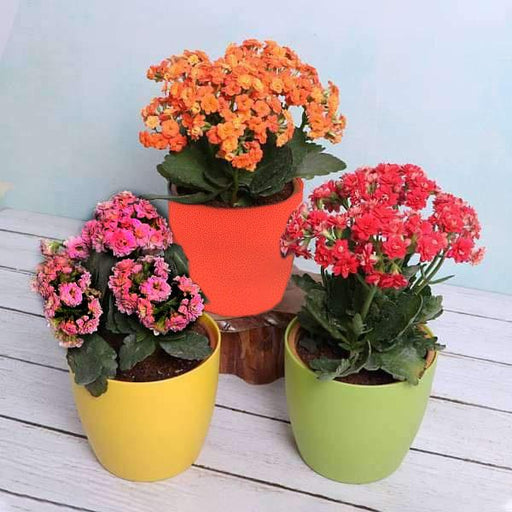
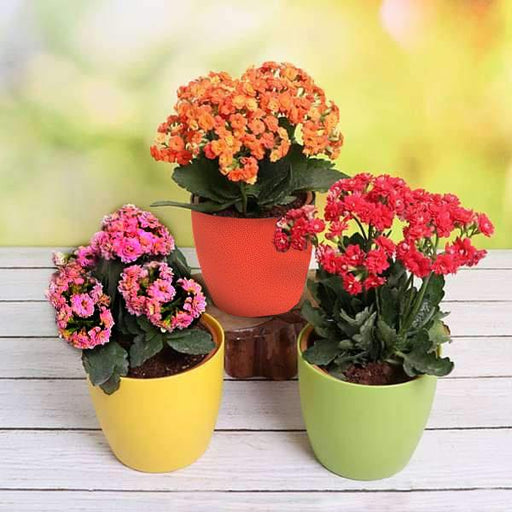 Save 10%
Save 10%
DescriptionThe Kalanchoes are thick leaved elegant flowering succulent houseplants. Make your home garden more vibrant and full of colors by bringi...
View full details Save 18%
Save 18%
DescriptionThis pack contains two 60 cm Spiral Stick Lucky Bamboo Plant + Glass vase + 250g white chip pebbels + 250g black chip pebbels.About Luc...
View full details

DescriptionIf the juvenile foliage along with a more compact plant is preferred, cut off all the climbing stems that develop, this will keep it bus...
View full details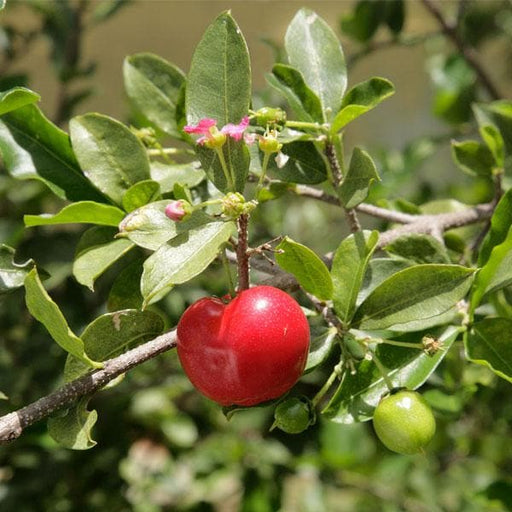 Save 15%
Save 15%
DescriptionGrowing Barbados Cherry is an easy way to add a tropical flair to your garden. When you know its important and how to care for Barbados ...
View full details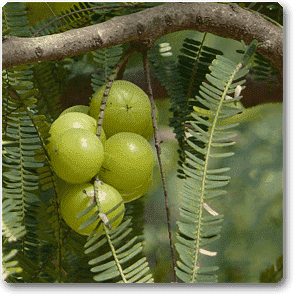 Save 17%
Save 17%
DescriptionImprove immunity of your all family member by growing a nutritious and vitamin rich an amazing Amla plant. Amla is a small to the medium...
View full details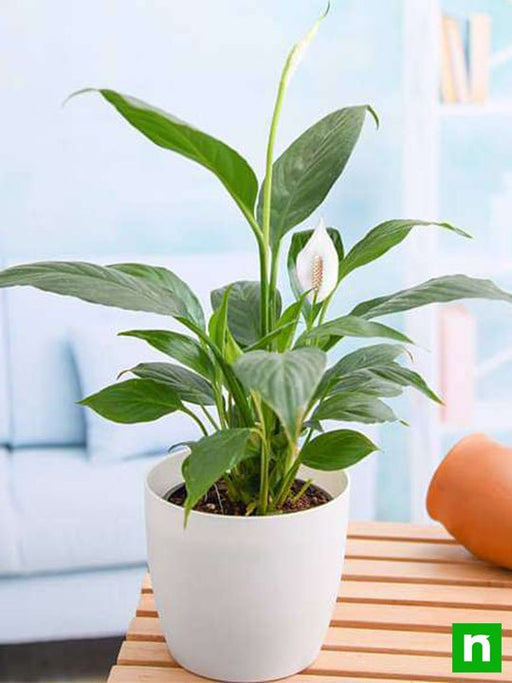
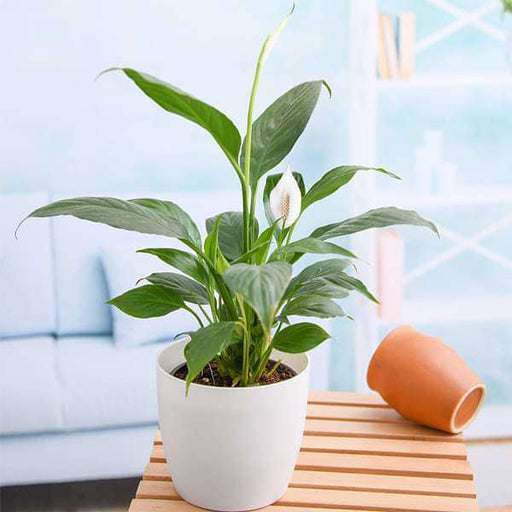 Save up to 15%
Save up to 15%
DescriptionPeace Lily Plant is a very popular and very rare indoor flowering houseplant. It is also an excellent air purifier plant.What makes it s...
View full details
 Save 20%
Save 20%
DescriptionFlowers make intimate connections they increase our connectivity with family and friends. Mogra plant is famously known as Jasmine flowe...
View full details
 Save 10%
Save 10%
DescriptionThe Kalanchoes are thick leaved elegant flowering succulent houseplants. Make your home garden more vibrant and full of colors by bringi...
View full details Save 45%
Save 45%
Description Pack of 4 succulents that are very easy to care for. A perfect pack to start growing plants worry-free. About You get 4 succulent plant...
View full details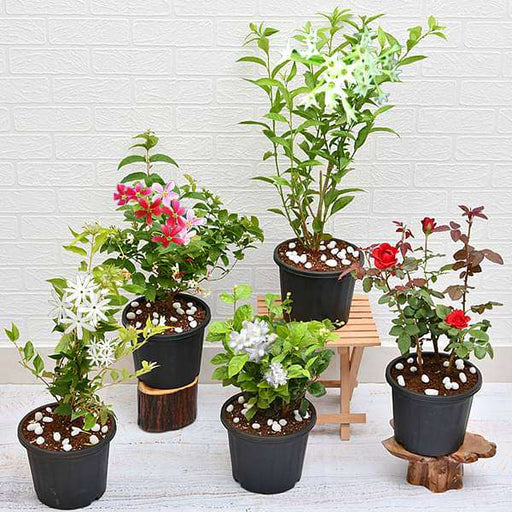 Save 12%
Save 12%
DescriptionAromatic plants bring into a room or house an often overlooked benefit. These plants have a pleasant scent.About You plant a hope when ...
View full details
 Save up to 50%
Save up to 50%
DescriptionIf you long for indoor greenery but have not succeeded with houseplants, consider these beautiful succulents. A perfect pack to start gr...
View full details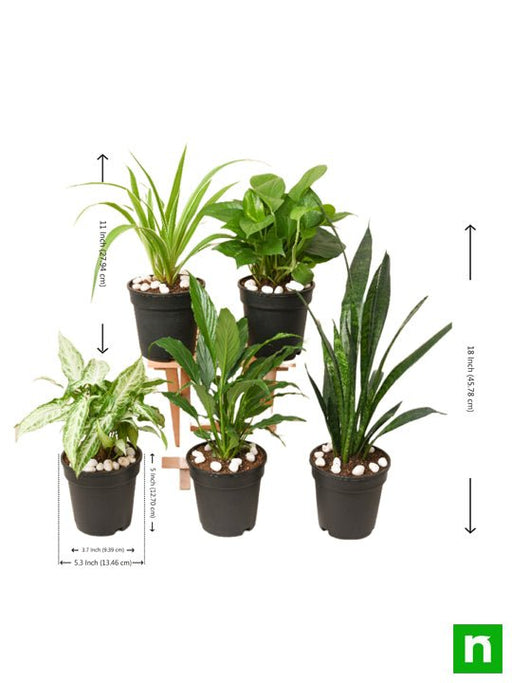
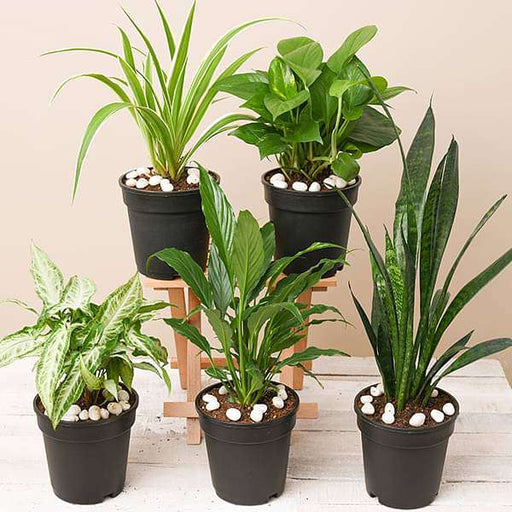 Save 21%
Save 21%
DescriptionThis plants pack contains amazing 5 houseplants + 5 Pots. Surround your home with these best pollution killer plants for a clean and hea...
View full details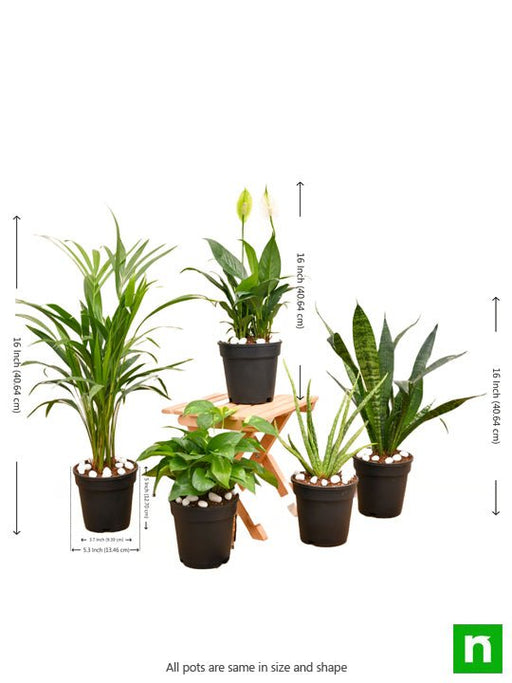
 Save 20%
Save 20%
DescriptionIf you or anyone from your family wants to breathe fresh air, cleaner air in their homes, this 5 plants pack purify the air around and r...
View full details
 Save 40%
Save 40%
DescriptionSet of 2 Bonsai Looking Grafted Adenium PlantsAbout You get 2 Bonsai looking hardy grafted Adenium plants in a single pack.Plants are k...
View full detailsImagine being welcomed into your garden or yard by a bed full of happy, blooming, and glowing greens. That’s the magic of having a ground cover.
A ground cover is most recommended if you are looking to upscale the landscape of your area. While the options of the grass always exist, ground covers prove much more attractive, less cumbersome to maintain, and hugely advantageous.
There is a lot of functionality you stand to gain when opting for a ground cover. The most important among them is the aesthetic value. Apart from this is the fact that groundcovers need almost no maintenance and save the regular watering and fertilizing required by all your plants.
So, what’s it that a ground cover offers you? For one, it keeps your soil intact and healthy, preventing it from eroding. It’s also a haven for all those little bugs that can naturally air out your soil and help create manure.
If you notice a definite change in how your home looks and feels, a lot of it has to do with the ground cover. It can help keep the surrounding cooler in the summer and offer some warmth during the colder months.
There are a variety of ground covers you can choose from. If you want something low, you can choose from a selection that only grows a few inches tall. If you are looking for something taller, you have enough ground cover options there as well.
That’s not where the varieties stop. You can find evergreens, blossoms in almost every color, and perennials quite easily. You only need to think of the perfect ground cover for your garden, and you’re sure to find it!
NurseryLive gives you the largest selection of ground covers and offers you a variety of added accessories, including soil and fertilizer, and a host of add-ons that can make it worth your while. Are you ready to make your ground cover the envy of those around?
There are a variety of ground cover plants available, each with its own unique characteristics and growing requirements. In this article, we'll explore some of the most popular types of ground cover plants and offer tips for choosing the right ones for your garden.
If you have a shaded area in your garden, there are still plenty of ground cover plants that can thrive in this environment. In this article, we'll explore some of the best ground cover plants for shade and offer tips for growing them successfully.
If you have a sunny area in your garden, there are also plenty of ground cover plants that can thrive in this environment. In this article, we'll explore some of the best ground cover plants for sun and offer tips for growing them successfully.
Planting ground cover plants requires careful planning and preparation. In this article, we'll offer step-by-step instructions for planting ground cover plants and offer tips for ensuring their success.
Ground cover plants require regular maintenance and care to ensure their health and beauty. In this article, we'll offer tips and guidelines for caring for ground cover plants.
Weeds can be a problem for ground cover plants, competing for water and nutrients and detracting from their beauty. In this article, we'll offer tips for controlling weeds in ground cover plants.
If you have a sloped area in your garden, ground cover plants can be an effective solution for controlling erosion. In this article, we'll explore some of the best ground cover plants for erosion control and offer tips for growing them successfully.
Ground cover plants can also be a valuable addition to pollinator gardens, providing food and habitat for bees, butterflies, and other pollinators. In this article, we'll explore some of the best ground cover plants for pollinator gardens and offer tips for growing them successfully.
If you're looking for ground cover plants that require minimal maintenance and care, there are plenty of options available. In this article, we'll explore some of the best low-maintenance ground cover plants and offer tips for growing them successfully.
Ground cover plants can be an attractive and practical solution for covering walkways and other pathways in your garden. In this article, we'll explore some of the best ground cover plants for walkways and offer tips for growing them successfully.
Ground cover plants can be a valuable addition to any landscaping project, providing beauty, texture, and practical benefits. In this article, we'll explore some of the best ground cover plants for landscaping and offer tips for growing them successfully.
Ground cover plants can be a beautiful addition to rock gardens, providing color, texture, and contrast. In this article, we'll explore some of the best ground cover plants for rock gardens and offer tips for growing them successfully.
Ground cover plants can also be a valuable addition to water features, providing natural beauty and helping to maintain a healthy ecosystem. In this article, we'll explore some of the best ground cover plants for water features and offer tips for growing them successfully.
Ground cover plants can also be a source of food and nutrition in your garden. In this article, we'll explore some of the best edible ground cover plants and offer tips for growing them successfully.
Deer can be a significant problem in many gardens, feeding on flowers, fruits, and vegetables. In this article, we'll explore some of the best ground cover plants for deer control and offer tips for growing them successfully.
Sloped areas in your garden can be challenging to plant and maintain, but ground cover plants can be an effective solution. In this article, we'll explore some of the best ground cover plants for slopes and offer tips for growing them successfully.
Evergreen ground cover plants can provide year-round color and texture in your garden. In this article, we'll explore some of the best evergreen ground cover plants and offer tips for growing them successfully.
If you have a sunny area in your garden that gets hot during the summer, there are still plenty of ground cover plants that can thrive in this environment. In this article, we'll explore some of the best ground cover plants for full sun and heat and offer tips for growing them successfully.
If you have a heavily shaded area in your garden, there are still plenty of ground cover plants that can thrive in this environment. In this article, we'll explore some of the best ground cover plants for full shade and offer tips for growing them successfully.
Ground cover plants can also be an effective way to attract wildlife to your garden, providing food and habitat for birds, butterflies, and other animals. In this article, we'll explore some of the best ground cover plants for attracting wildlife and offer tips for growing them successfully.
Ground cover plants are low-growing plants that spread across the ground and provide a decorative and functional cover for bare soil.
Ground cover plants can help to reduce soil erosion, suppress weeds, and provide a decorative and functional cover for bare soil. They can also provide habitat for beneficial insects and other wildlife.
The right ground cover plants for your garden will depend on a variety of factors, including the growing conditions, the size and shape of the area to be covered, and your personal preferences.
Before planting ground cover plants, it is important to prepare the soil by removing any weeds or debris and adding compost or other organic matter to improve soil fertility and structure.
Plant ground cover plants at the appropriate depth and spacing, following the instructions on the plant label. Water the plants thoroughly after planting and mulch around them to help conserve moisture and suppress weeds.
Ground cover plants require regular watering, fertilizing, and pruning to maintain their health and appearance. It is also important to monitor them for pests and diseases and take appropriate action if necessary.
Weeds can be a problem for ground cover plants, competing for water and nutrients and detracting from their beauty. In this article, we'll offer tips for controlling weeds in ground cover plants.
Ground cover plants can be propagated by division, cuttings, or seed. Each method has its own advantages and disadvantages, and the best method will depend on the specific plant and growing conditions.
Pruning ground cover plants can help to maintain their shape and size and promote healthy growth. The best time to prune will depend on the specific plant and its growing habits.
Ground cover plants can be an effective solution for controlling soil erosion, but it is important to choose the right plants for the specific conditions and soil type.
Plants that thrive in shade, such as ferns, hostas, and ajuga, are a good choice for shaded areas.
Plants that require full sun, such as sedums, thyme, and creeping phlox, are a good choice for sunny areas.
Plants that tolerate wet conditions, such as marsh marigold, creeping Jenny, and sweet flag, are a good choice for wet areas.
Plants that tolerate dry conditions, such as sedum, ice plant, and thyme, are a good choice for dry areas.
Plants with strong root systems and the ability to spread quickly, such as creeping juniper, vinca, and wintercreeper, are a good choice for steep slopes.
Plants that thrive in rocky, well-drained soil, such as sedum, thyme, and creeping phlox, are a good choice for rock gardens.
Plants that attract pollinators, such as bees, butterflies, and hummingbirds, such as creeping thyme, creeping phlox, and bee balm, are a good choice for pollinator gardens.
Plants that are commonly used in Japanese gardens, such as moss, ferns, and dwarf bamboo, are a good choice for creating a traditional Japanese garden.
Plants that thrive in hot, dry conditions, such as lavender, rosemary, and thyme, are a good choice for creating a Mediterranean garden.
Plants with a relaxed, informal appearance, such as creeping phlox, dianthus, and lamb's ear, are a good choice for creating a cottage garden.
Plants with lush, tropical foliage, such as elephant ear, ferns, and hostas, are a good choice for creating a tropical garden.
Plants with a neat, uniform appearance, such as boxwood, euonymus, and creeping phlox, are a good choice for creating a formal garden.
Plants that require minimal watering, fertilizing, and pruning, such as sedum, ice plant, and creeping thyme, are a good choice for creating a low-maintenance garden.
Plants that can withstand foot traffic, such as thyme, creeping phlox, and woolly thyme, are a good choice for high-traffic areas.
Plants that have a compact, trailing growth habit, such as sweet potato vine, creeping jenny, and dwarf mondo grass, are a good choice for container gardens.
Plants with a neat, uniform appearance and a low growth habit, such as boxwood, dwarf mondo grass, and creeping phlox, are a good choice for borders and edging.
Plants that thrive in shade and have a natural, woodland appearance, such as ferns, hostas, and bleeding heart, are a good choice for woodland gardens.
Plants that attract butterflies, such as milkweed, butterfly bush, and black-eyed Susan, are a good choice for butterfly gardens.
Plants that can tolerate poor soil and dry conditions, such as creeping juniper, thyme, and sedum, are a good choice for slopes with poor soil.
Plants with strong root systems and the ability to spread quickly, such as creeping juniper, vinca, and wintercreeper, are a good choice for slopes with erosion problems.